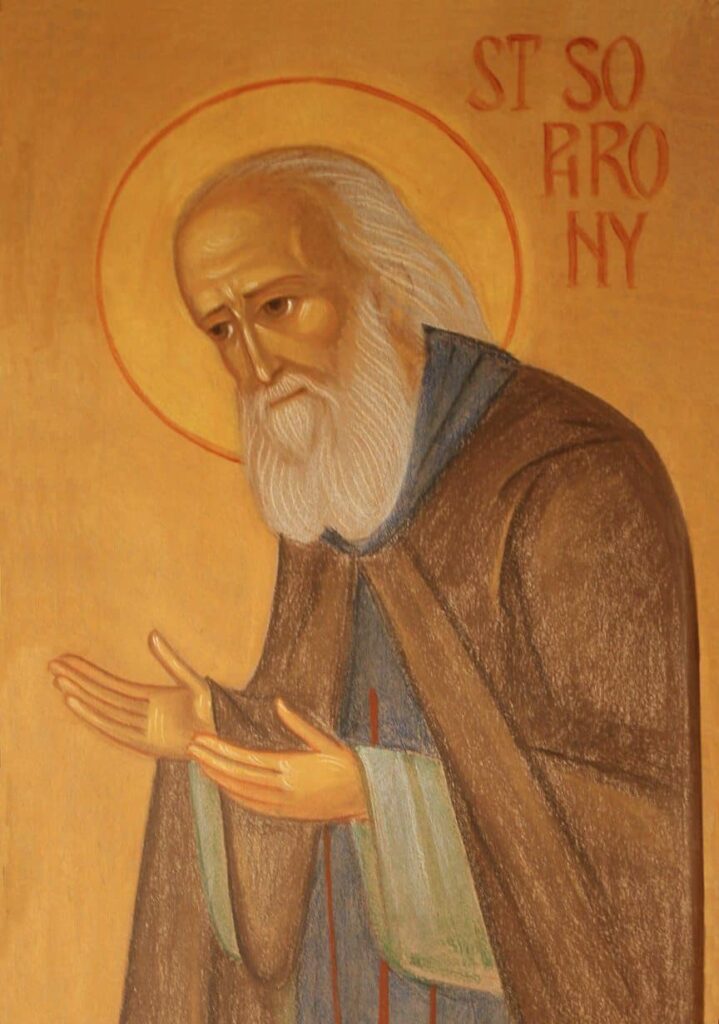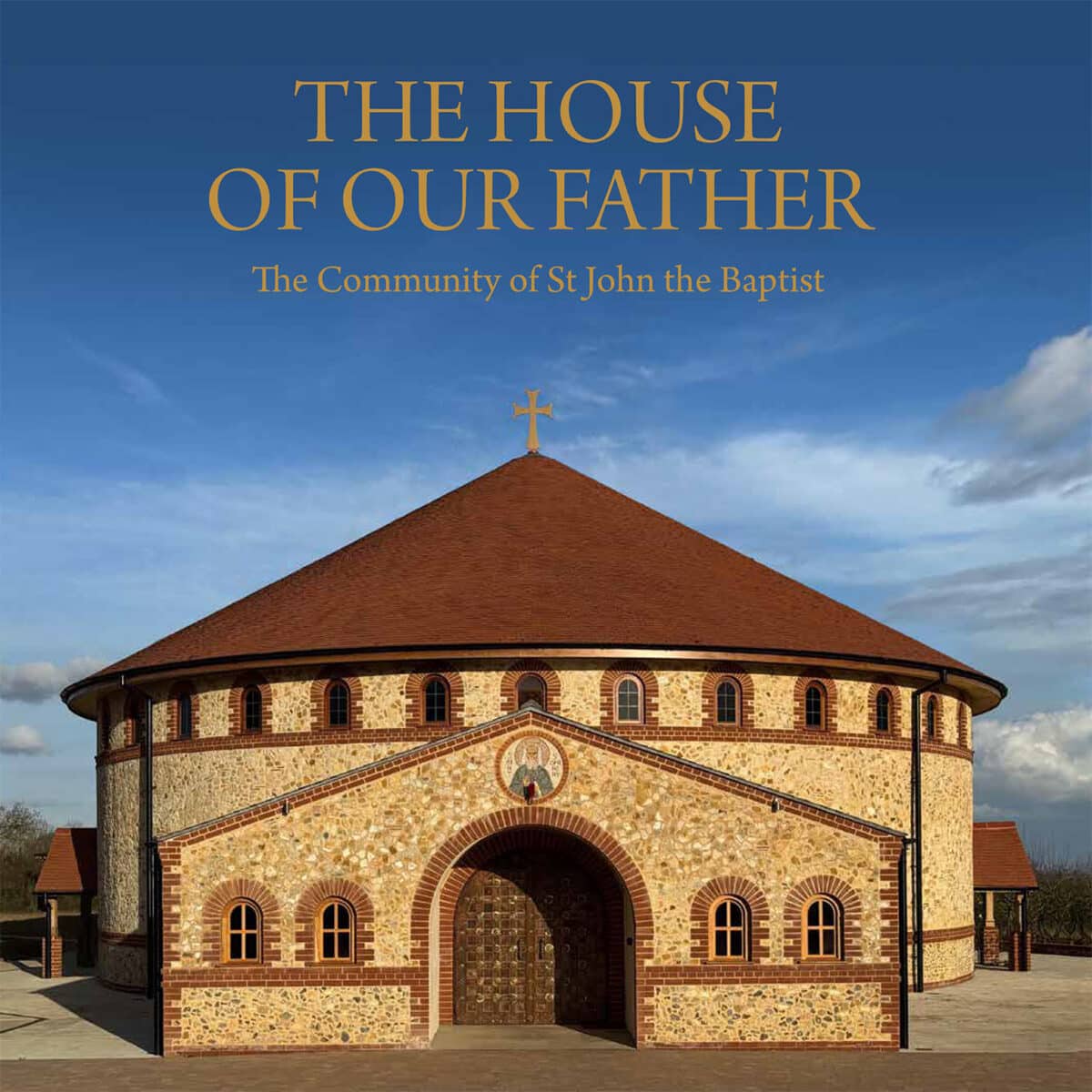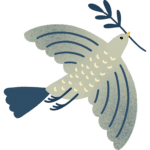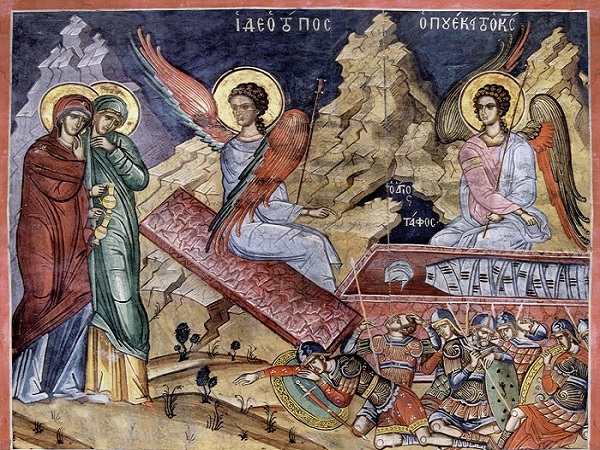It is a great event when someone that one has known alive suddenly becomes a saint. With Father Sophrony it was not unexpected, as I had considered him holy ever since I met him, yet the fact of it being confirmed by the whole church was a very strong experience.
It was awe-inspiring and frightening to be given the responsibility to paint his icon.
Of all the icons that had already been painted, I could only agree with one.
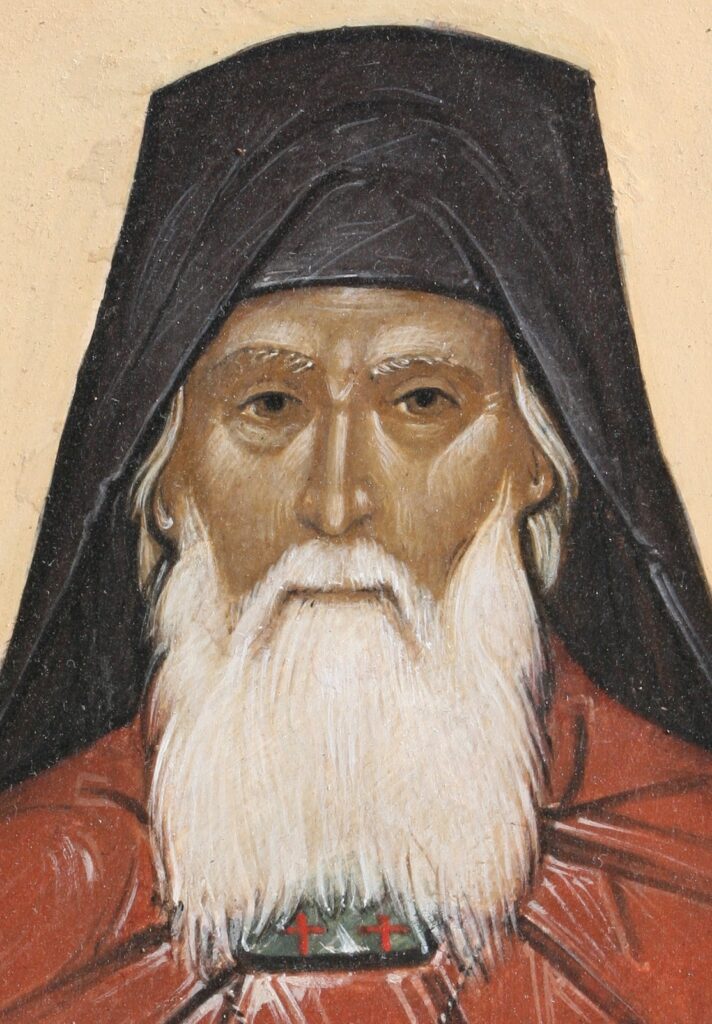
A friend of the monastery had painted this icon in 1993 just after he heard the news of Father’s departure. He had left it unfinished and only put the name, inscription and final touches this year. To me this icon had the right interior luminosity as well as a transfigured likeness. I could not agree with the various images painted of him holding a chalice or dressed in his winter coat, holding one of the buildings of the monastery. One of my iconography teachers had taught me that the chalice cannot be attributed to any particular saint, even not the ones who encouraged frequent Holy Communion, because the chalice can be held by any ordained clergy.
So when I began to paint Father’s icon, I surrounded myself with his photos, a few of his own drawings where he had unknowingly produced a likeness of himself, as well as a reproduction of the icon mentioned above, and with fear and prayer, set to work, trusting that he would help me.
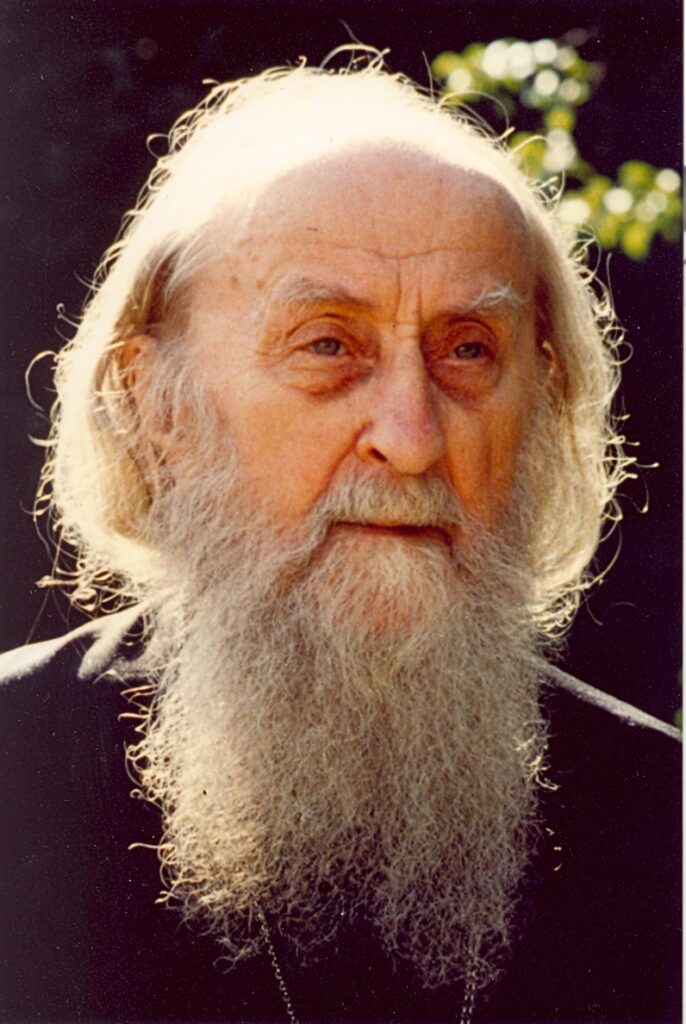
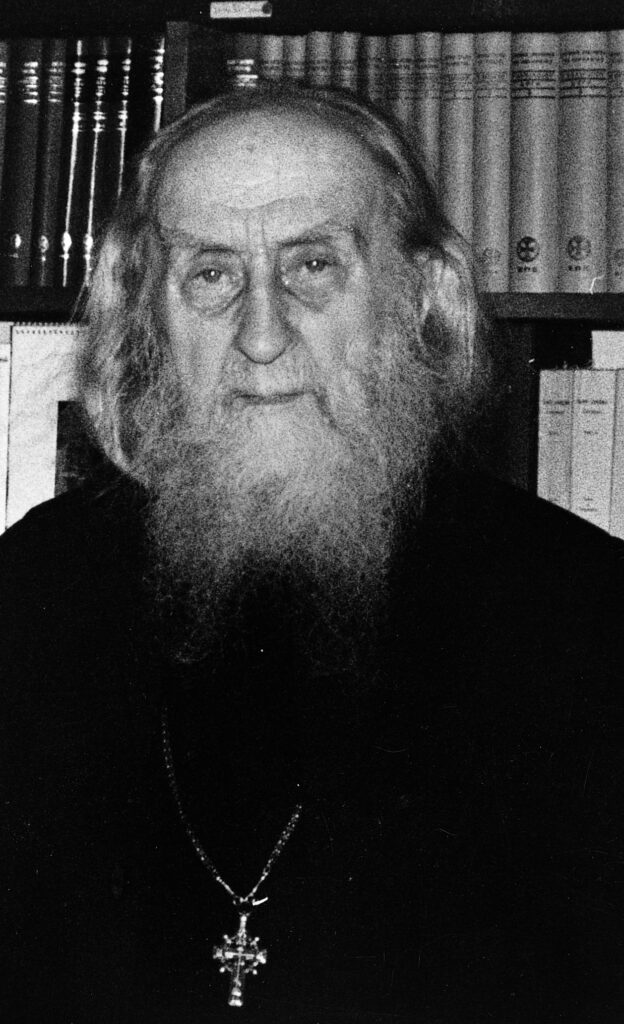
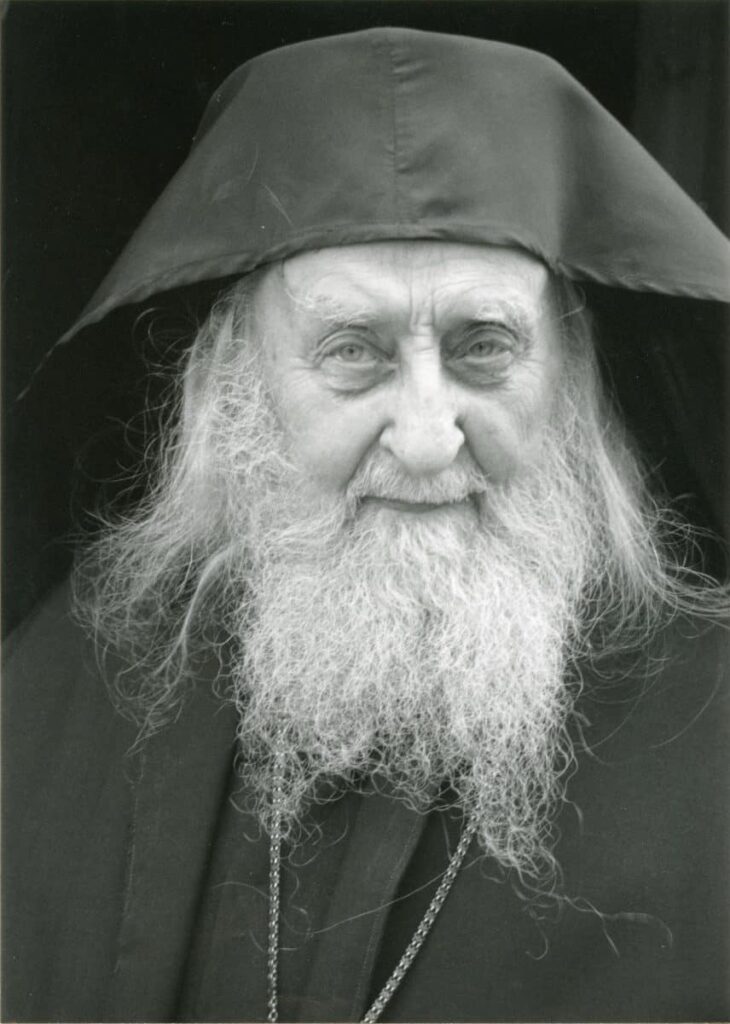
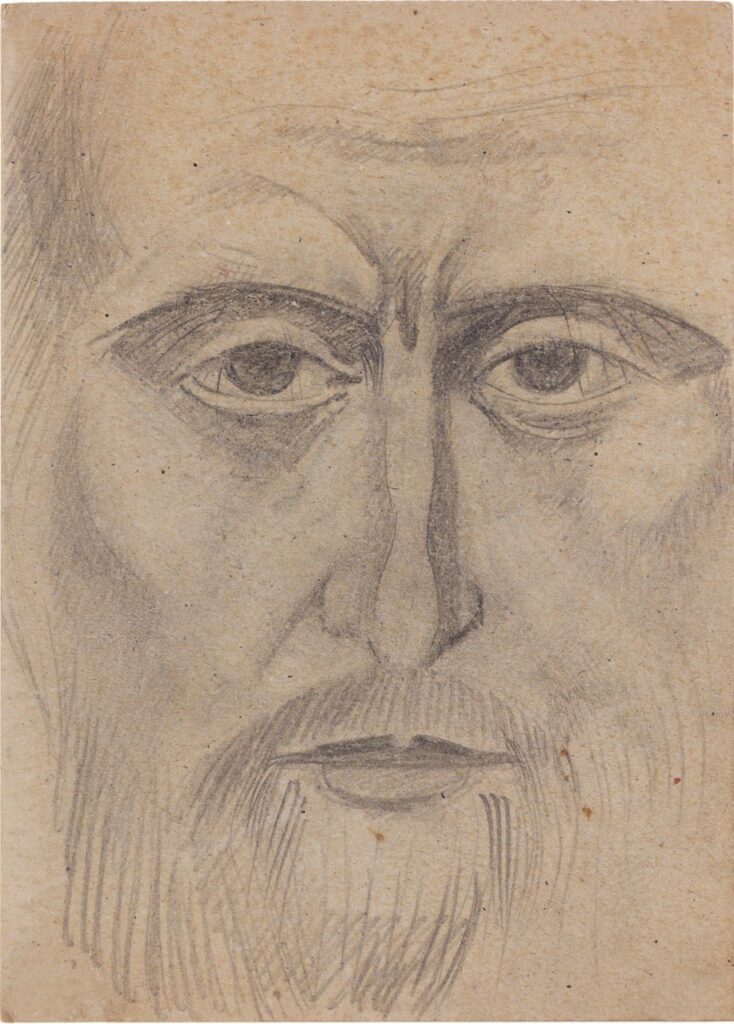
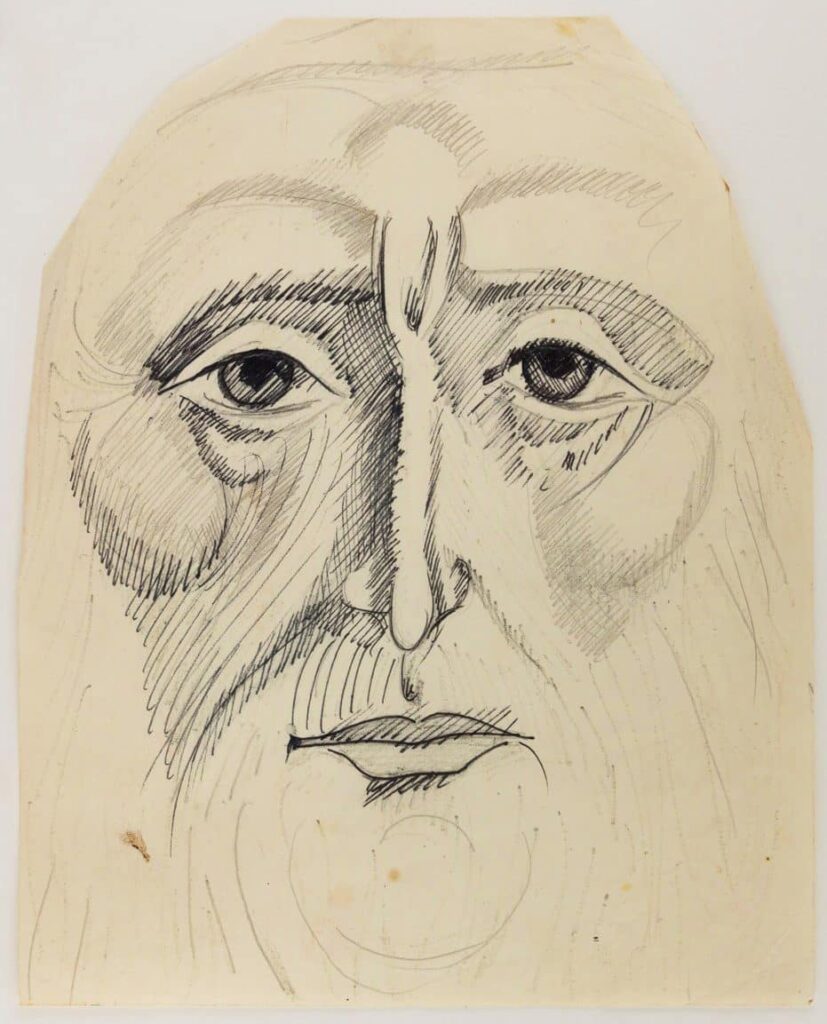
The first icon that I painted expressed a visual summary of him in iconographic language. I put him in full monastic clothing, blessing with his right hand and holding the icon of his elder, Saint Silouan with his other hand. He himself considered the main task and purpose in his life was to make his own elder, Saint Silouan known to the world, first by publishing his writings, then by writing about him himself and finally by painting his icon and construct a chapel in his memory.
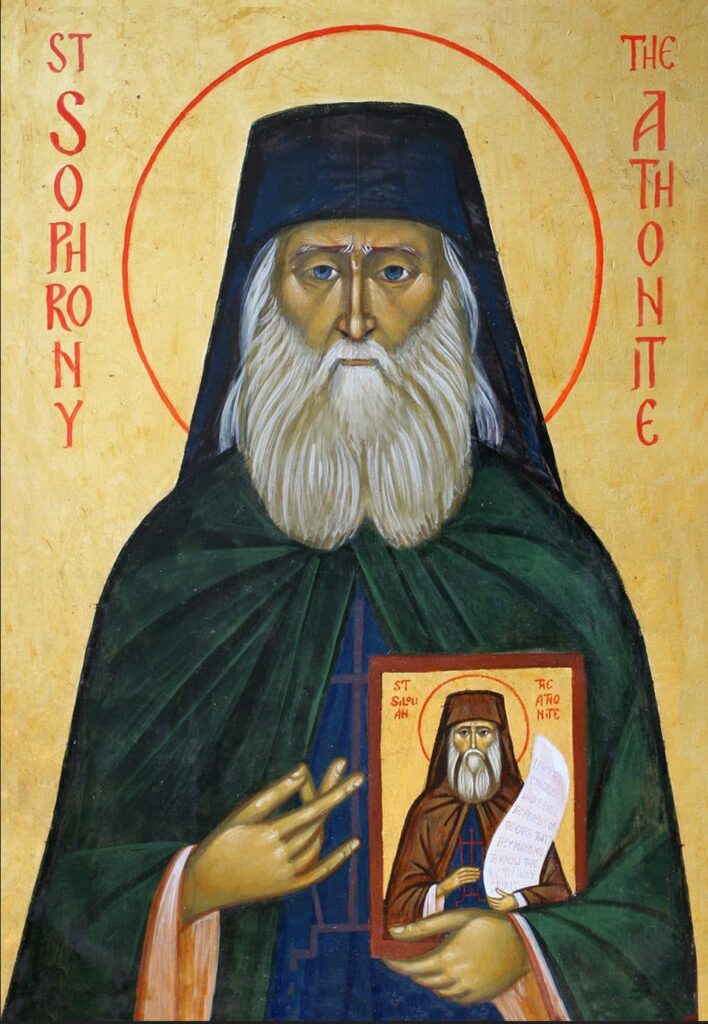
I only realized later that in fact it is not a convincing likeness. Icons should portray the transfigured person and be an image of their interior state, but they must also look like the person, have an exterior likeness. This is a very delicate point, as it must not be a photographic likeness neither a caricature.
The next icon I painted was smaller in size and it was not possible to paint a miniature icon of St Silouan in his hands, so I settled for a second model: I painted him bare headed, with an epitrachileon, holding a scroll where an extract of his own writings could be written. For the epitrachileon I chose to paint his own personal one that had been embroidered for him and which had the symbol of the monastery on it. A friend of mine criticized me for this choice as the result is slightly “sweet” and Father Sophrony was strongly opposed to sentimentality.
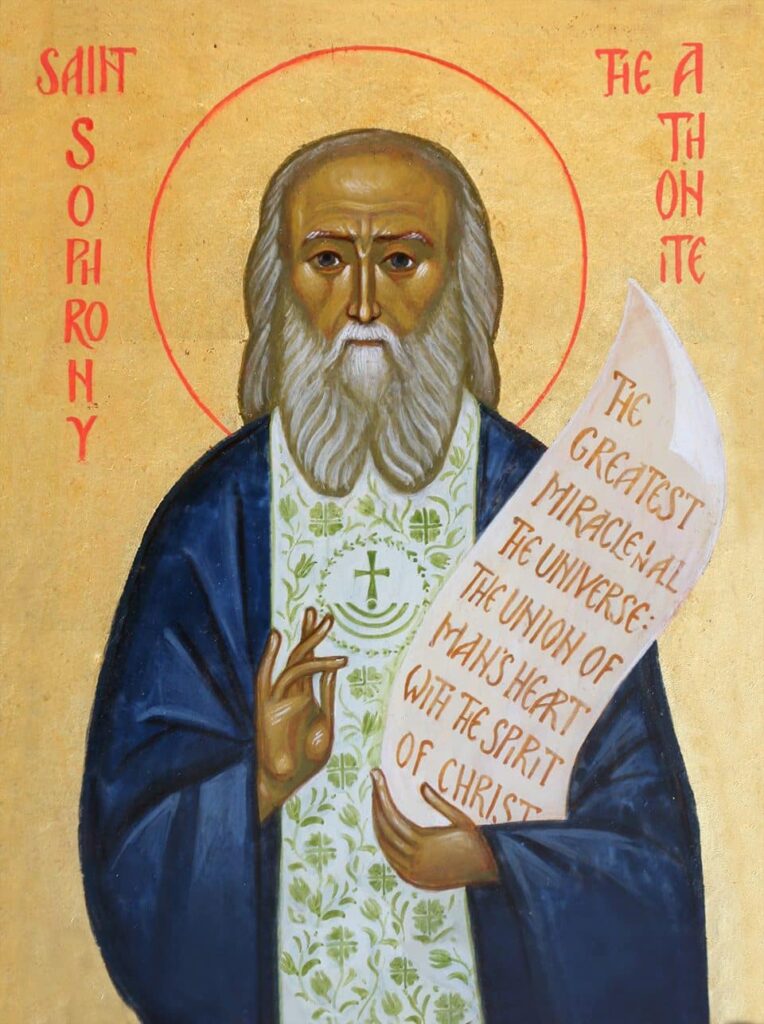
However this icon has a drawback, as there is no visual proof that he was a monk. Later I corrected this by replacing the epitrachileon with the great schema.
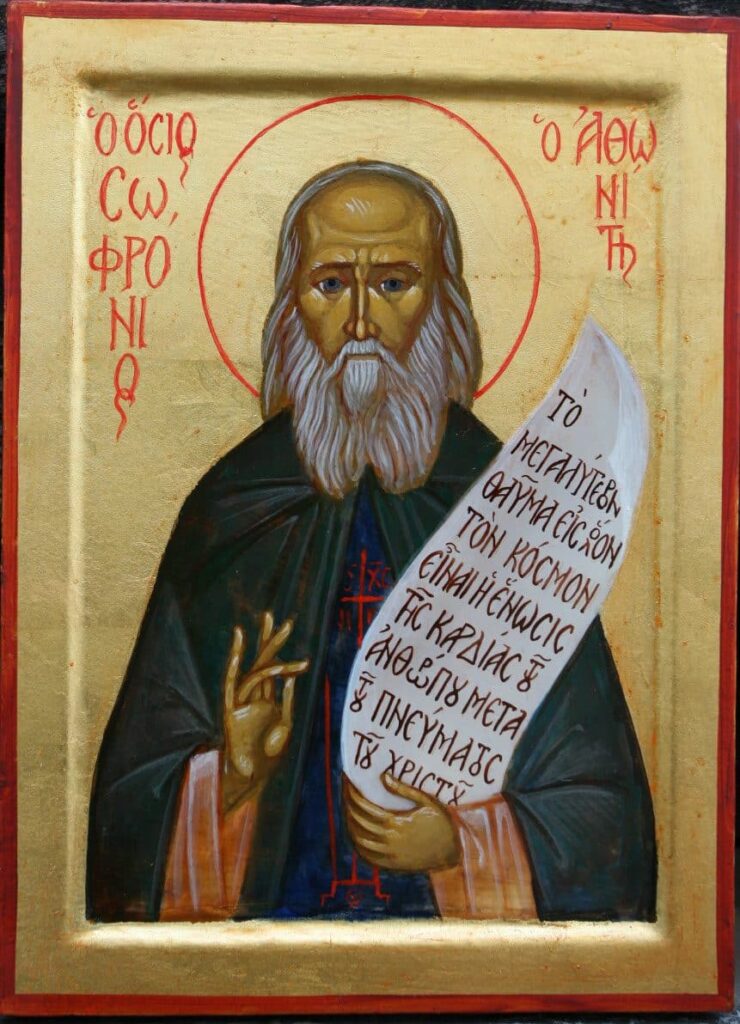
For the next one, which was to go on his tomb in the crypt, I dressed him in the vestment he had been buried in, with a monk’s hat and veil and holding an open Gospel with a fitting inscription. As such it again was a more iconographically correct formula, as he was represented as a hieromonk.
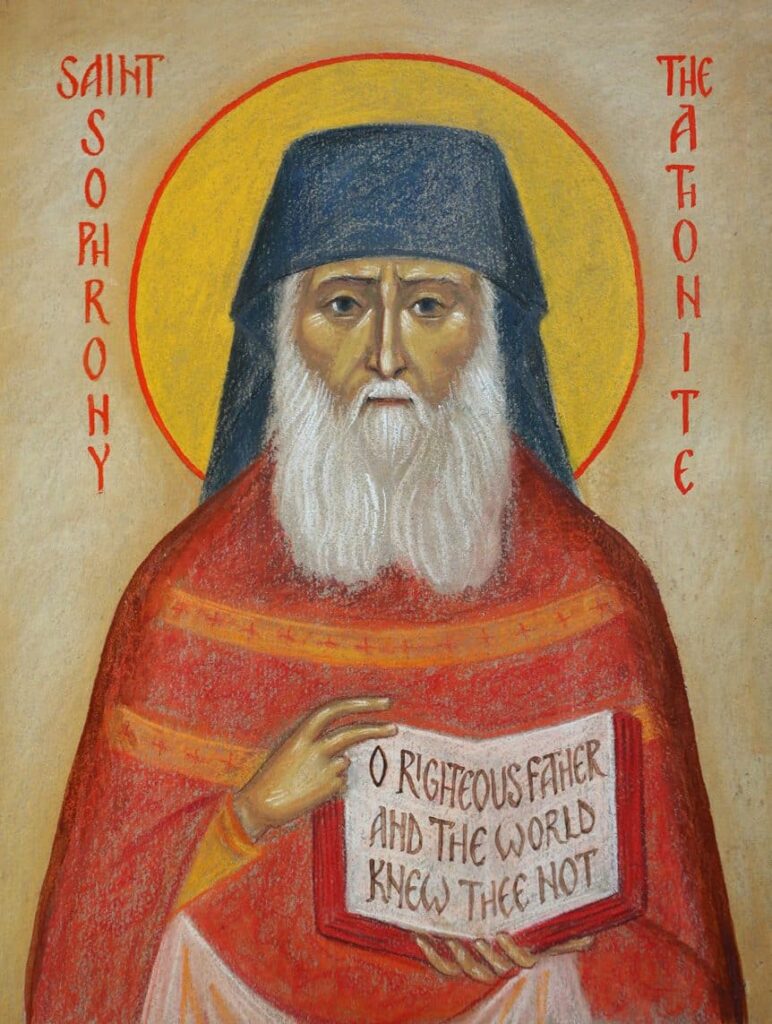
The only drawback here was that it had to be ready in a hurry so I used pastels on paper and then mounted it on a panel of wood. So, later when there was more time, I painted a replacement icon with traditional materials.
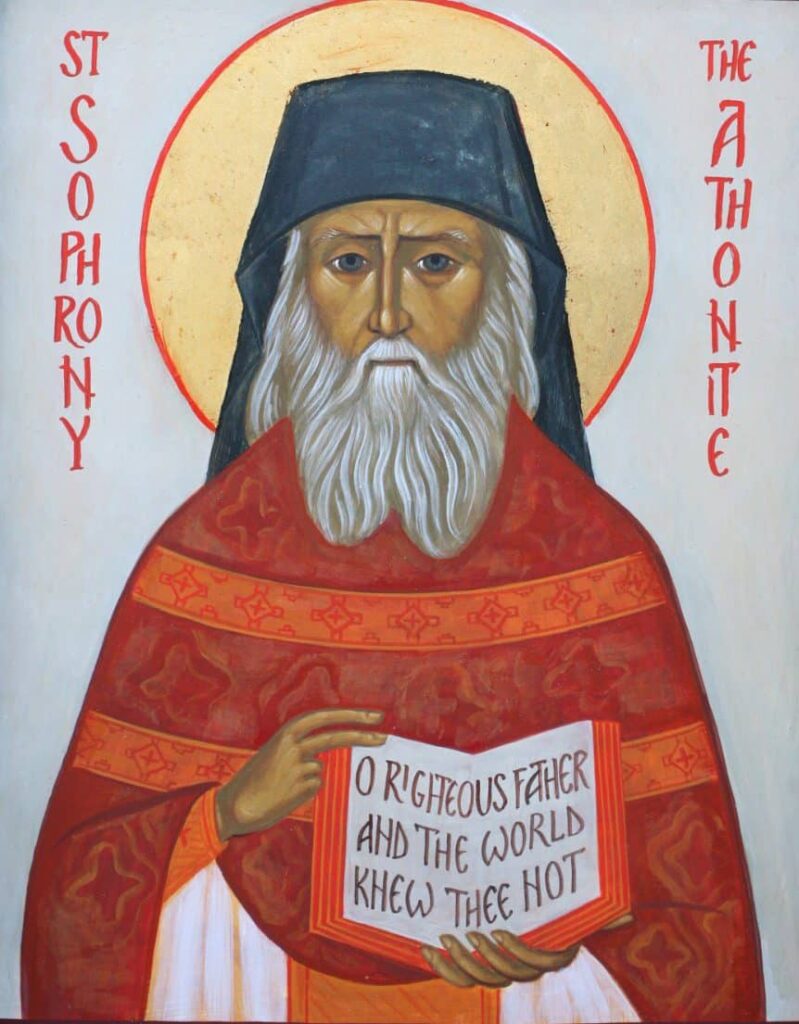
I also had to paint him in our two refectories. The newer one, where I had painted the faces, was not such a problem; we changed the Saint standing next to Saint Silouan who luckily happened to have similar traits to our Saint. As the walls were painted in real fresco it was not possible to undo what was already there, but it was possible to paint over it.
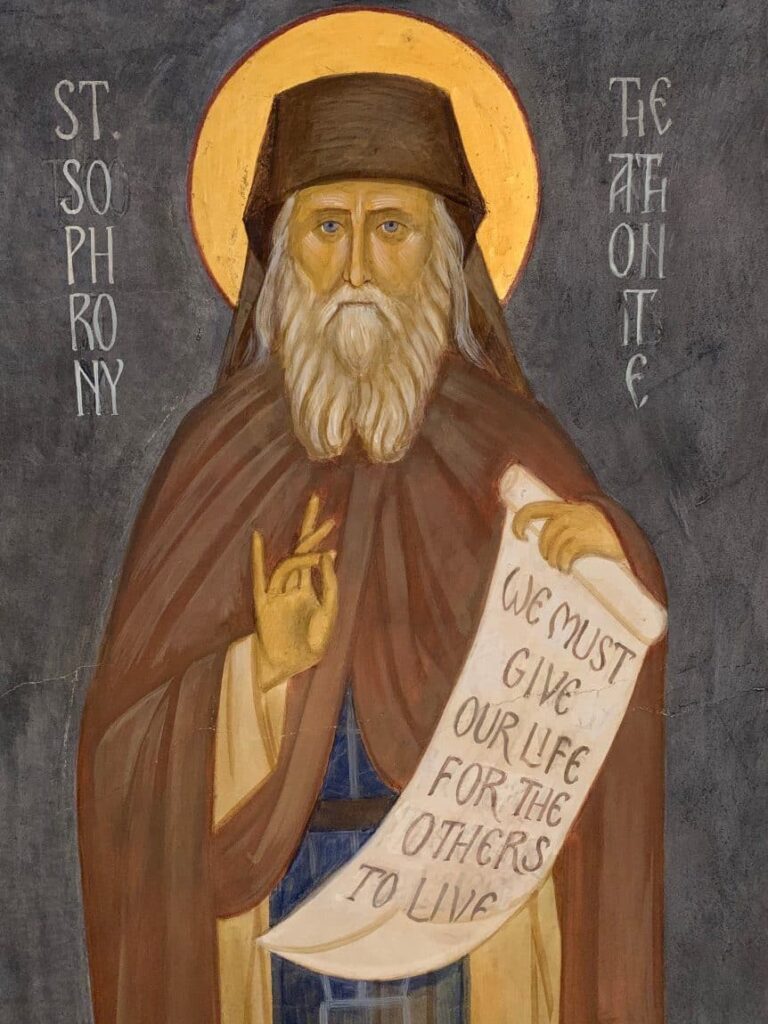
The other refectory, where the murals had been painted by Father himself, was much more of a challenge as I had to paint him in his own style, fitting in with his own work. But as it was much more difficult I have the impression that he helped me even more and the end result was better than any of the previous ones.
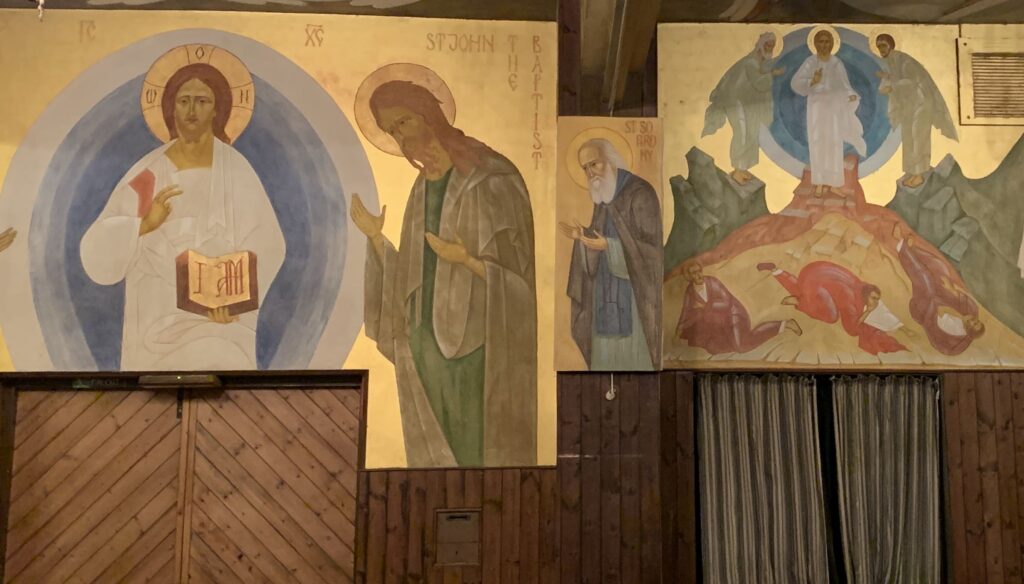
I have not managed to reach the level of this last image again. However with each new icon I try to catch even just a fraction of him and, thankfully, he does help.
